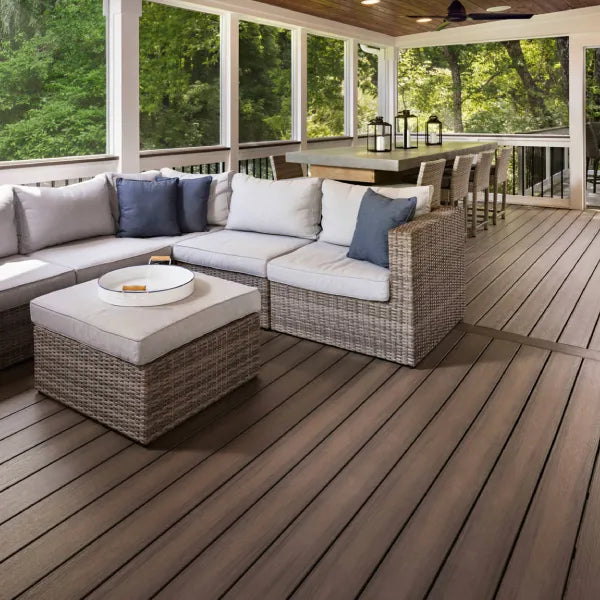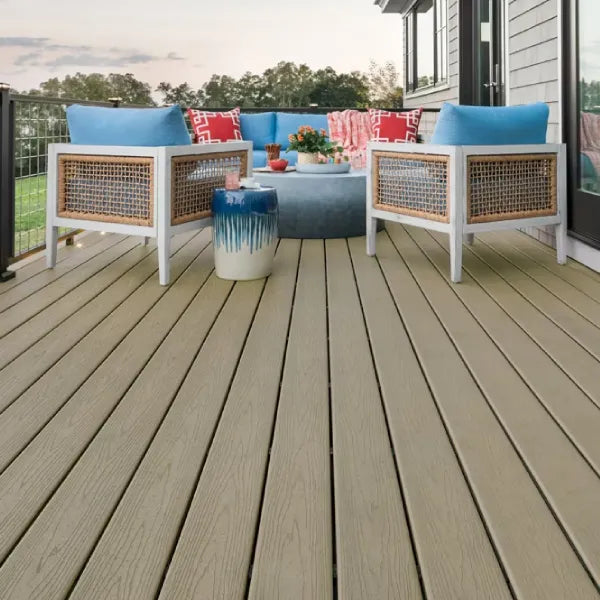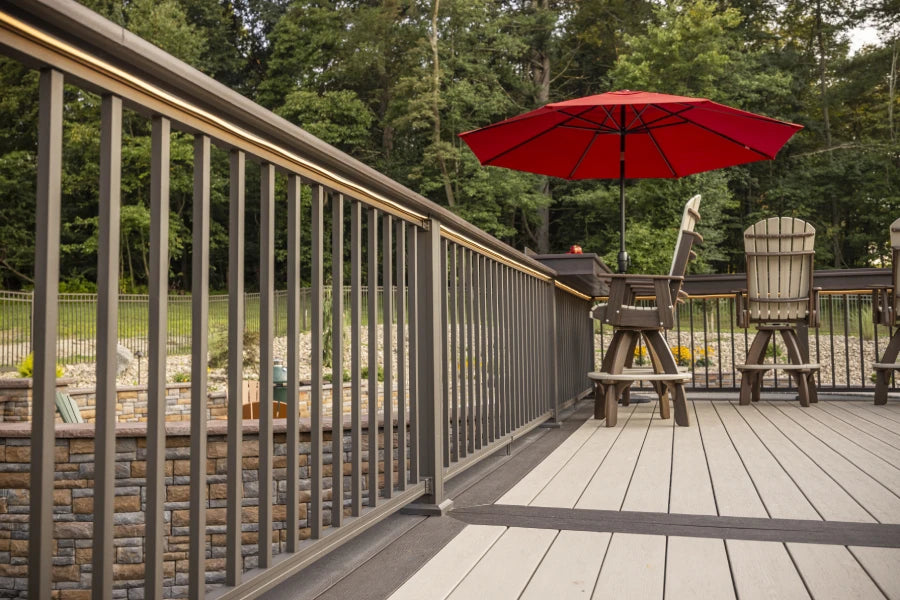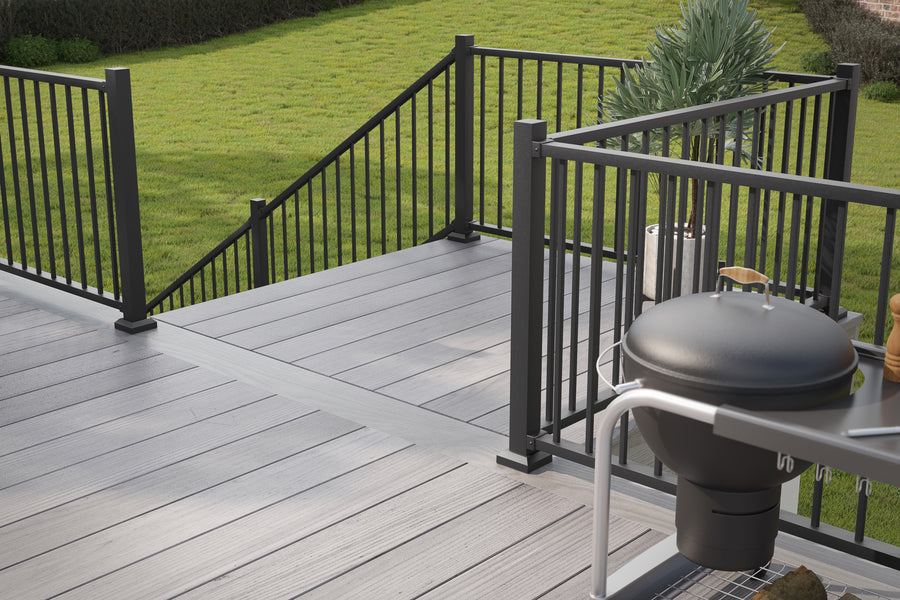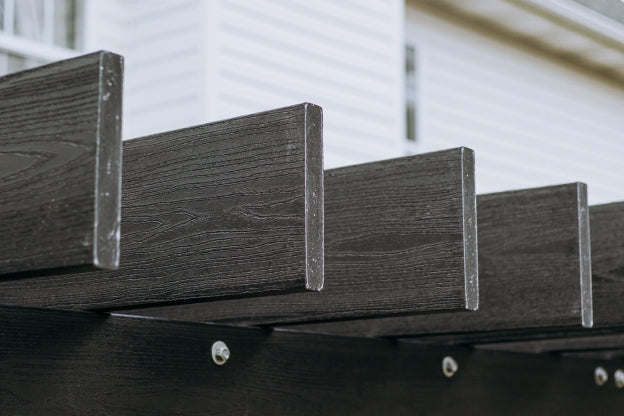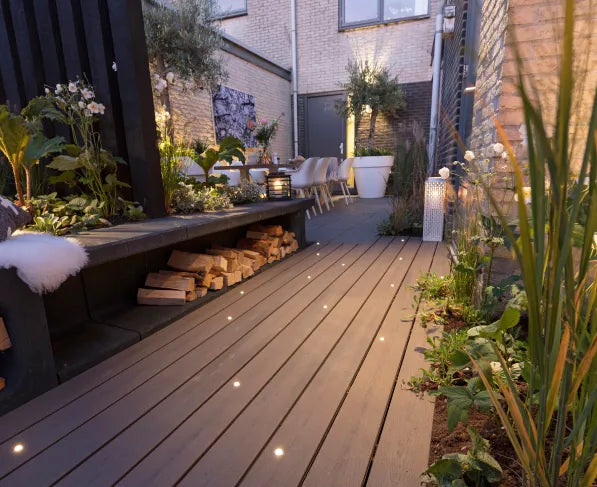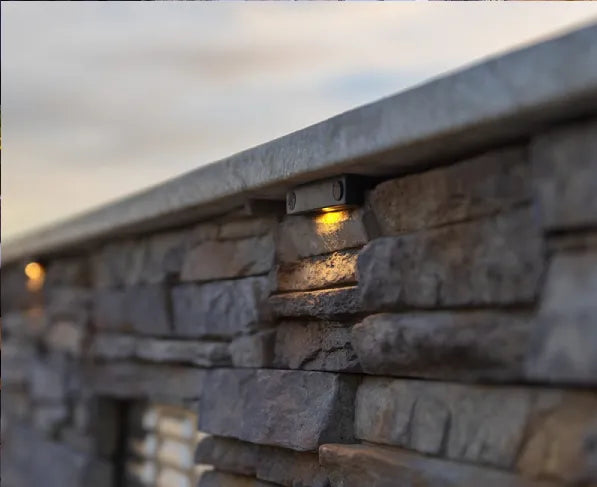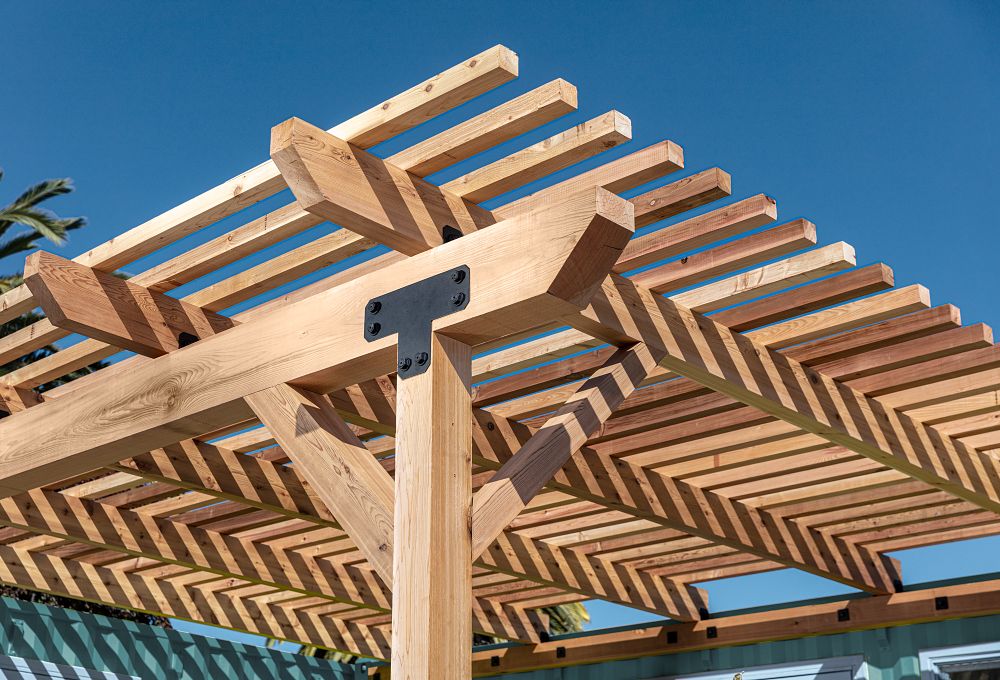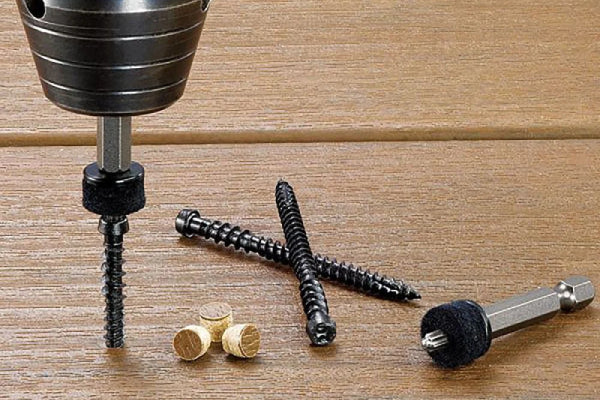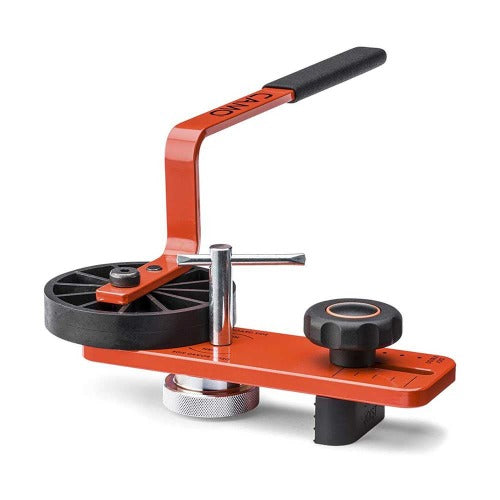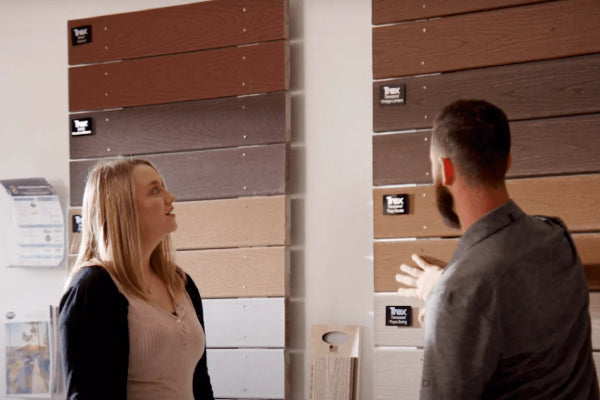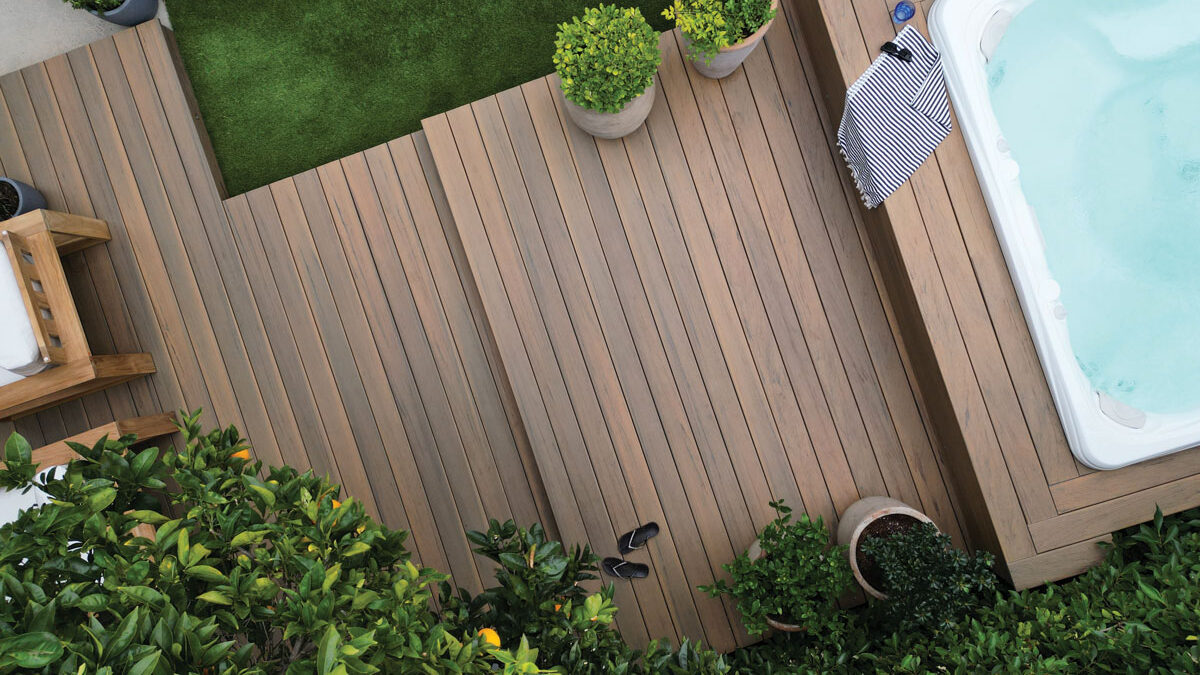Are You Planning to Spruce Up Your Outdoor Living Space with a New Composite Deck?
Composite decking is a choice that's hard to ignore. It offers several advantages over traditional wood decking. A key statistic highlights this shift: low-maintenance deck materials, including composite decking, are being used in three out of four deck installations today. This speaks volumes about homeowners' preference for convenience and durability when it comes to their outdoor spaces.
The Shift Towards Low-Maintenance Materials
In recent years, we've seen an increasing number of folks opt for low-maintenance materials like composite decks. They offer unbeatable longevity while requiring less elbow grease than traditional wooden decks - no wonder they're so popular.
Decking made from composites requires minimal care compared to wooden alternatives:
- No annual sealing or staining is needed - just regular cleaning will do the trick.
- You won’t find any splinters here. Plus, it’s resistant against decay and insects – a true win-win situation if there ever was one.
- Durable beyond belief, your composite board can withstand extreme weather conditions better than most woods could dream of doing.
All these benefits make choosing composite decking an easy decision for many people designing their perfect outdoor oasis.
Key Considerations for Composite Deck Installation
Throughout this guide, one critical aspect to remember is the importance of adhering to the manufacturer's instructions when working with composite decking material. For a deeper understanding of deck construction and its various components, we invite you to explore an informative Parts of a Deck: A Guide to Deck Terminology. This resource will provide you with valuable insights into the anatomy of a deck.

Ensuring Compliance with Building Codes and Permits
Ensure project success by complying with local building codes and securing required permits. Research and understand your local building codes, which impact key aspects of installation, such as deck size, height, and load capacity. Understanding these aspects is essential for a smooth composite deck installation process.
Planning and Designing Your Deck with Composite Materials
Begin by carefully planning your deck project. Consider the size, shape, and location of your deck. Think about factors like color selection, which can affect the deck's comfort under direct sunlight. Contemplate what activities you plan to use it for.
You can design a simple square or rectangle layout if you want a traditional look. Or maybe consider an intricate multi-level plan that includes spaces for dining, lounging, and cooking if you like hosting parties.
Evaluate Your Space
Carefully assess your available outdoor space. Consider factors such as the size and shape of your yard, existing landscaping, and any potential obstacles like trees, utilities, or property lines. These considerations will influence the deck's location and layout.

Choose Your Composite Decking Material
The choice of composite decking material is a pivotal decision that influences the installation process, the deck’s appearance, and its durability. When choosing your material, consider factors such as durability, eco-friendliness, and style preferences to ensure your composite deck meets your expectations.
A visit to The Deck Store can provide you with a variety of composite decking options, allowing you to make an informed decision based on your specific needs and preferences. Keep in mind that your choice of decking boards impacts the composite deck installation process.
Whether you prefer a traditional wood-like appearance or a modern design, there’s composite decking material suitable for every taste. By carefully selecting the right composite material, you’ll not only enhance the aesthetic appeal of your outdoor space but also invest in a low-maintenance, sustainable, and long-lasting solution for your home.
Preparing the Decking Area for Installation
The foundation of a successful deck lies in the preparation. You'll need to set up your decking frame and ensure proper drainage, which starts with having leveled joist centers. Though it may seem daunting, the preparation process for a successful deck is relatively straightforward.
- Measure and mark the area where the deck will be installed.
- Ensure proper clearance from structures and obstacles.
- Prepare the ground by leveling and clearing any debris or vegetation.
- Depending on the desired height, you may need to dig post holes and pour concrete footings to create a stable foundation.
Maintaining Proper Drainage
To avoid water damage, you need good drainage under and around your composite deck. Here’s where slope comes into play; think about directing rainfall away like a river flowing down a hillside.
Did you know most professionals recommend a 1% grade? That means for every foot (12 inches) along your framing direction, there should be at least an eighth-inch drop in elevation.

Laying Down Your Frame
Your framework, or "skeleton," consists mainly of horizontal beams called joists connected by vertical posts resting on concrete piers known as footing pads. You may wonder why these joist centers matter so much? Well, consider them like dancers performing in sync – they have to move together harmoniously; otherwise, their performance will be off-kilter.
Installing the Composite Decking Boards
Once the frame is in place, it's time to lay down the composite deck boards. Composite materials need room to breathe and move with changes in temperature and humidity levels.
One critical aspect is maintaining proper spacing between decking boards. A gap of about 3mm, or roughly the thickness of two quarters stacked together, will allow for this natural movement without buckling.
Controlling your deck seams also plays an important role in professional-looking installations. This isn't just for aesthetics; uneven or mismatched seams can create weak points on your deck surface over time.
Using Hidden Fasteners
If you're aiming for a sleek finish without visible screws marring your beautiful new decking install, hidden fasteners are worth considering. These devices attach securely to your deck frame while gripping onto special cavities within each board end.
In contrast to traditional methods where screw holes might be left exposed, hidden fasteners offer an attractive alternative that ensures durability while preserving visual appeal - truly making sure every inch of your new composite decking installation looks its best.
Finishing Touches for Your Composite Deck
After installing your composite decking, enhance both its appearance and functionality with key finishing touches like fascia finish, post caps, and deck railings. These elements serve a dual purpose by improving aesthetics and protecting your deck's structure from moisture and debris.
By dedicating some extra attention to these final details, you're not only ensuring the long-lasting beauty of your composite deck but also fortifying it against the elements –guaranteeing the extended lifespan of your outdoor retreat. With these thoughtful finishing touches, your composite deck will not only be a source of pride but a lasting sanctuary for years to come.

Securing Deck Safety with Deck Railings
One essential component not to overlook is the railing. Not only does it provide an aesthetic touch, but it also ensures safety for everyone who uses your deck. Here at The Deck Store, we offer a variety of railings suitable for all types of composite decking.
There are several factors to consider when selecting your railing, such as material, design, and height. For instance, our pressure-treated lumber railings are popular due to their durability and resistance against decay and insects.
Deck railings do more than just add to the aesthetics of your composite deck; they serve as a critical safety feature, offering peace of mind for your family and guests as they relish your new outdoor living space.
Maintaining Your Composite Deck
While composite decking is low maintenance, it's crucial for its longevity and aesthetics to protect it from excessive moisture. Redirect downspouts and dryer vents, maintain proper ventilation, and avoid placing organic mulch near the deck to minimize moisture exposure. Ensure effective drainage with at least 6 inches of clear space beneath your deck. Regular cleaning and inspection are also vital. Clean your deck as needed and inspect for any damage or wear that may need attention.
Protect Against Moisture and Ensure Proper Drainage
To protect your composite deck from moisture, you might consider opting for fully capped composite decking material, which offers superior resistance to water damage. Additionally, you should apply waterproof flashing tape around the perimeter of the deck, along the ledger board, and around any posts or other structural elements. These steps will further shield your deck from moisture exposure.
DIY vs. Hiring a Professional
A significant decision in the installation of composite decking is the choice between a DIY project or enlisting the services of a professional. This choice largely depends on your skill level, budget, and timeline. If you have experience with home improvement projects and feel confident in your abilities, a DIY installation can be a rewarding and cost-effective option.
However, if you’re unsure about your skills or prefer a more hands-off approach, hiring a professional to install your composite deck may be the better choice. A professional installer can ensure a high-quality, efficient, and compliant installation, giving you peace of mind and a beautiful result.
Conclusion
Ultimately, the choice between DIY and hiring a professional depends on your unique situation and preferences. With these steps and tips in mind, you're ready to install composite decking like a pro! And remember, The Deck Store has got you covered. We have all the resources you need to begin your project smoothly and effectively – just as it should be!
And as you set out on this exciting journey, always prioritize safety. While our guide provides valuable insights, it is no substitute for professional advice. Please exercise caution and always adhere to the manufacturer's instructions. Explore our premium decking supplies and get started today. Happy decking!
FAQ
What is composite decking made of?
Composite decking is typically made of a combination of wood fibers, recycled material, and bonding agents. This mix results in a durable, low-maintenance material that mimics the look of natural wood.
What is the proper framing for composite decking?
Framing on Composite Decks is different from wood Decks. Plastic composite decking requires sturdily supported structures that can withstand heat. In the center, the required width of joists should be 16 inches or 12 inches in the center of the running board.
Can I install composite decking myself?
Yes, composite decking can be a DIY project if you have the necessary tools and skills.
Can I cut composite decking to fit my specific dimensions?
Yes, composite decking can be cut using a circular saw, or miter saw with a fine-toothed blade. Ensure proper safety precautions and follow safety guidelines for cutting.
Can I install composite decking over an existing wood deck?
In some cases, you can install composite decking over an existing wood deck if the substructure is in good condition and properly prepared. Consult the manufacturer's guidelines for compatibility and installation requirements.
Should I use hidden fasteners or screws for my composite decking?
It depends on your preference and the aesthetics you desire. Hidden fasteners provide a clean, unblemished surface, while screws offer a more traditional appearance.
 This item ships for FREE!
This item ships for FREE!